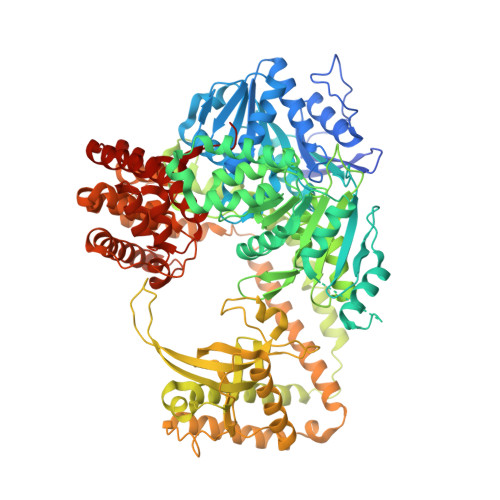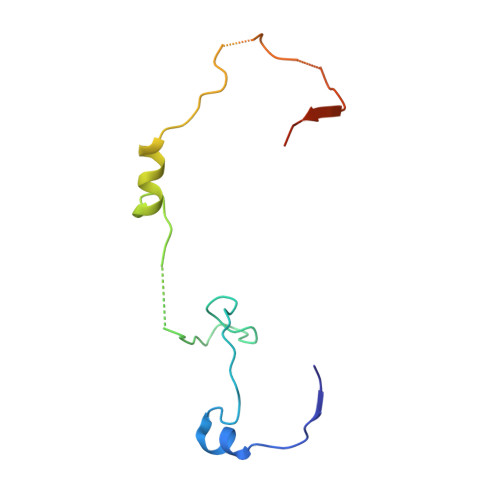NRDE2 negatively regulates exosome functions by inhibiting MTR4 recruitment and exosome interaction.
Wang, J., Chen, J., Wu, G., Zhang, H., Du, X., Chen, S., Zhang, L., Wang, K., Fan, J., Gao, S., Wu, X., Zhang, S., Kuai, B., Zhao, P., Chi, B., Wang, L., Li, G., Wong, C.C.L., Zhou, Y., Li, J., Yun, C., Cheng, H.(2019) Genes Dev 33: 536-549
- PubMed: 30842217
- DOI: https://doi.org/10.1101/gad.322602.118
- Primary Citation of Related Structures:
6IEG, 6IEH - PubMed Abstract:
The exosome functions in the degradation of diverse RNA species, yet how it is negatively regulated remains largely unknown. Here, we show that NRDE2 forms a 1:1 complex with MTR4, a nuclear exosome cofactor critical for exosome recruitment, via a conserved MTR4-interacting domain (MID). Unexpectedly, NRDE2 mainly localizes in nuclear speckles, where it inhibits MTR4 recruitment and RNA degradation, and thereby ensures efficient mRNA nuclear export. Structural and biochemical data revealed that NRDE2 interacts with MTR4's key residues, locks MTR4 in a closed conformation, and inhibits MTR4 interaction with the exosome as well as proteins important for MTR4 recruitment, such as the cap-binding complex (CBC) and ZFC3H1. Functionally, MID deletion results in the loss of self-renewal of mouse embryonic stem cells. Together, our data pinpoint NRDE2 as a nuclear exosome negative regulator that ensures mRNA stability and nuclear export.
- State Key Laboratory of Molecular Biology, CAS Center for Excellence in Molecular Cell Science, Shanghai Institute of Biochemistry and Cell Biology, Chinese Academy of Sciences, University of Chinese Academy of Sciences, Shanghai 200031, China.
Organizational Affiliation:



















